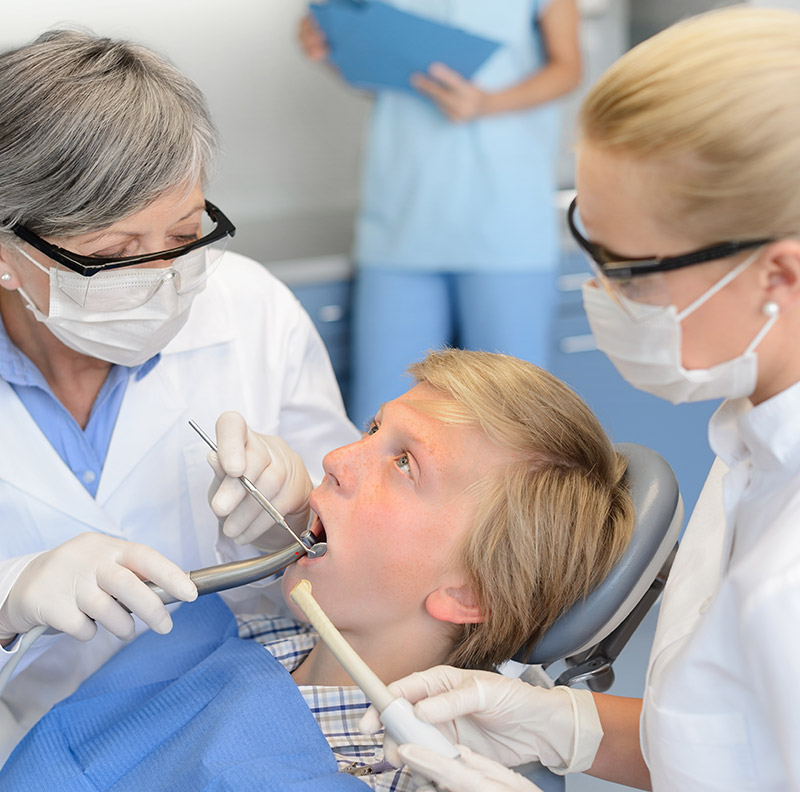Extractions/Wisdom Teeth Removal Near You
The third molars are often referred to as the “wisdom teeth.” They typically start to appear when a person is between 17 and 24 years old. Sometimes they come in partially or sideways and for many people they become impacted because of the limited space in the back of the mouth. Once a tooth becomes impacted, or the teeth are too crowded, bacteria can collect in gaps and lead to serious infections. When any of these situations occur, the wisdom teeth might need to be extracted.

Problems Commonly Associated with Misaligned Wisdom Teeth
The most common problems that are associated with misaligned wisdom teeth include:
- Gums that become swollen and painful
- Become infected
- Surrounding teeth become crowded or damaged
- Possible damage to nerves and jawbone
Not every person needs wisdom teeth extraction, but a dental professional or an oral surgeon can remove the wisdom teeth should it become necessary.
How does wisdom teeth extraction work?
Dentists work closely with patients to make the procedure as comfortable as possible for each patient. An anesthetic will be applied to the wisdom teeth and the gums and tissues in the surrounding areas. Once the area is completely numb, the wisdom teeth are removed. Patients can also opt for sedation dentistry to help aid them in being comfortable during the procedure.
After the Wisdom Teeth Extraction
Oftentimes, a patient will have some bleeding and swelling following the procedure. Gauze can be applied to any area that is bleeding and ice can be used to reduce any swelling. Oftentimes, the dentist will prescribe pain medication to help manage pain while the mouth heals. The patient will need to eat soft foods and drink cold liquids for about 24 hours following the procedure and avoid brushing the back teeth for at least 24 hours.
